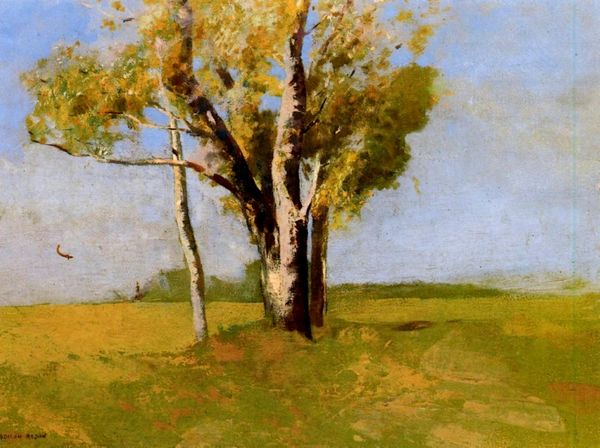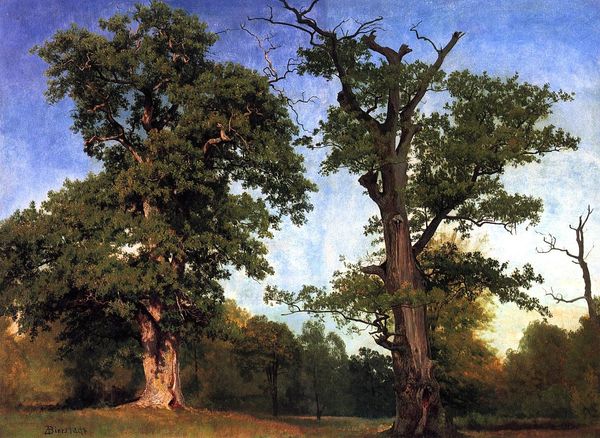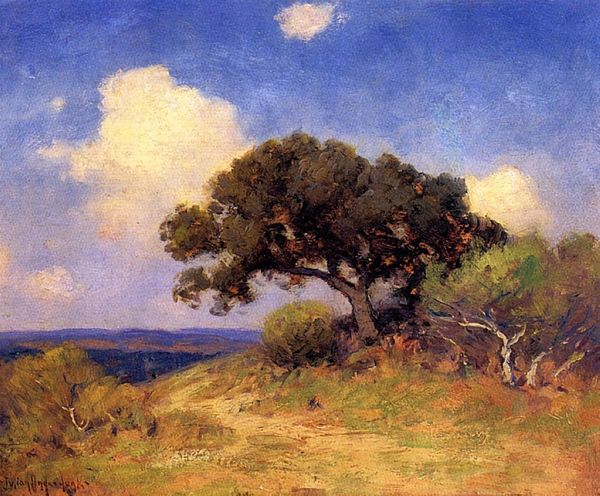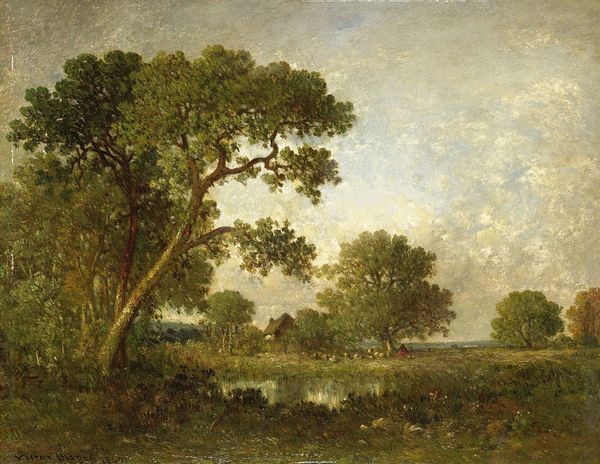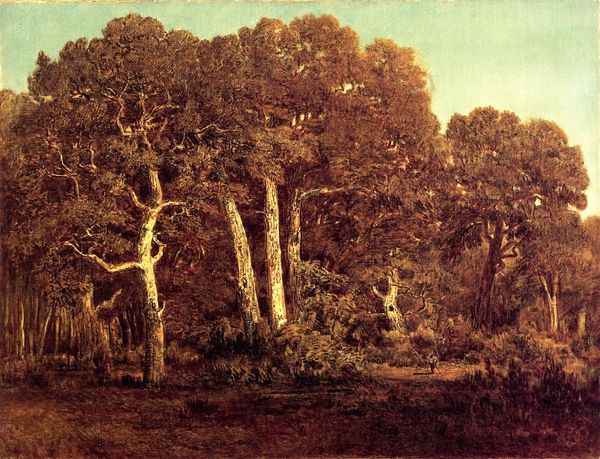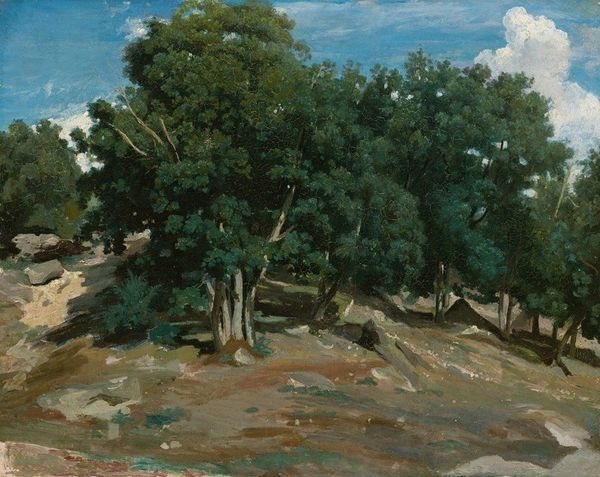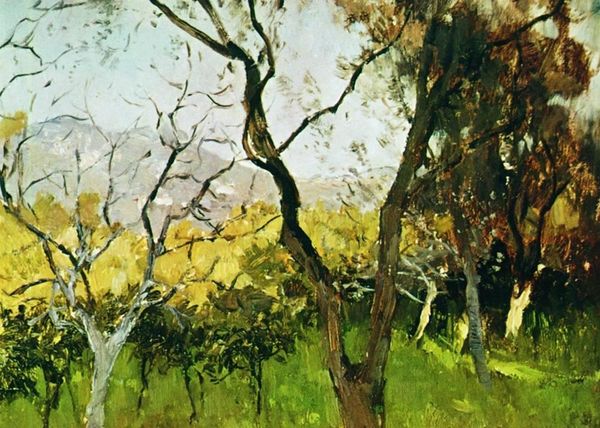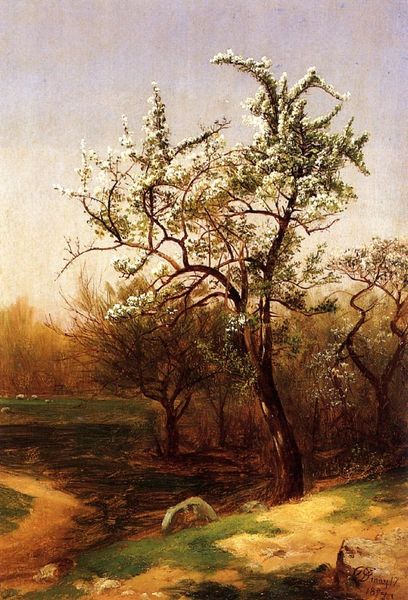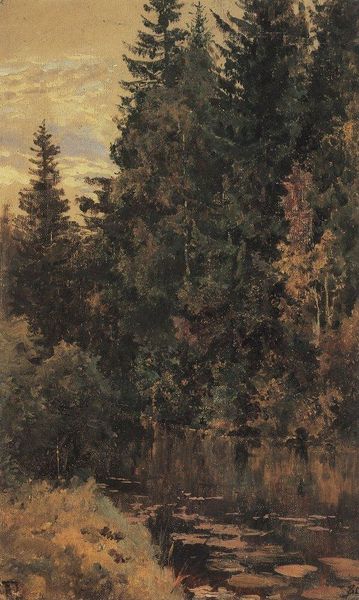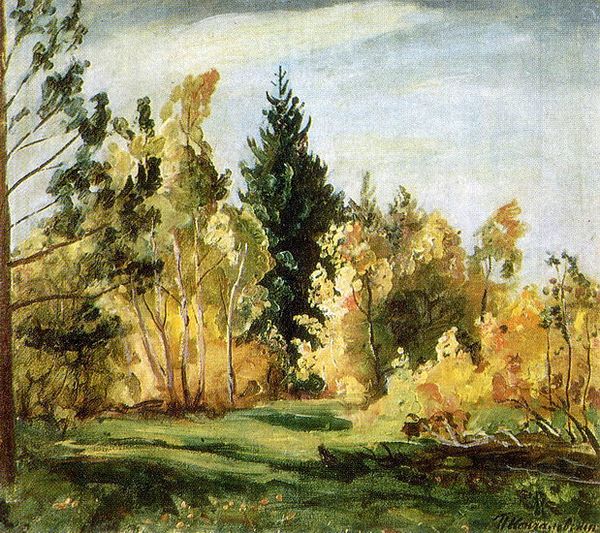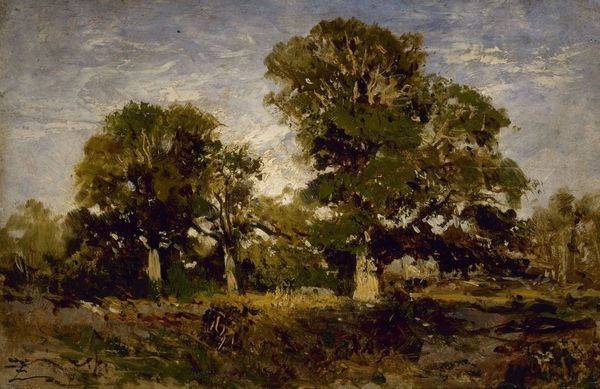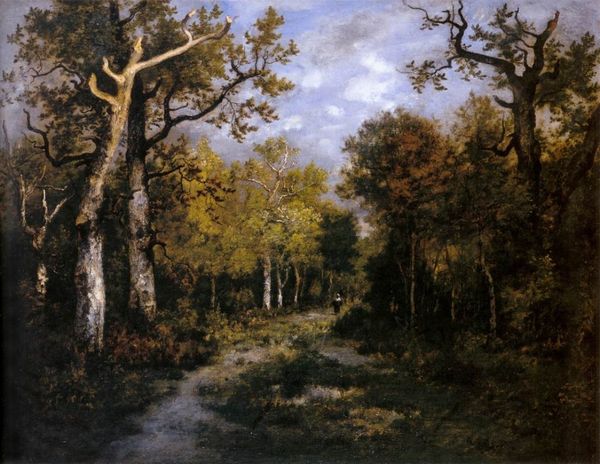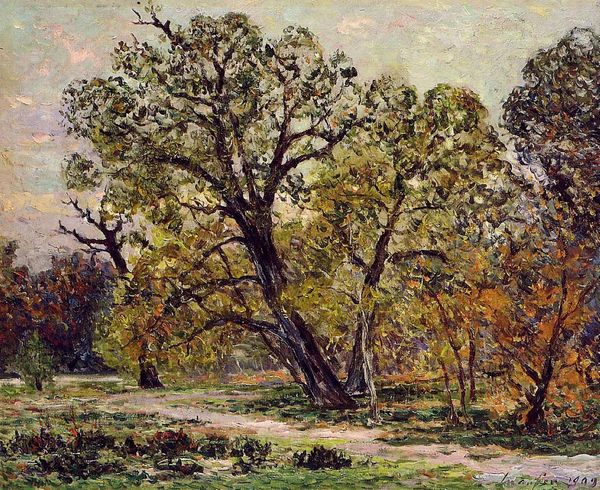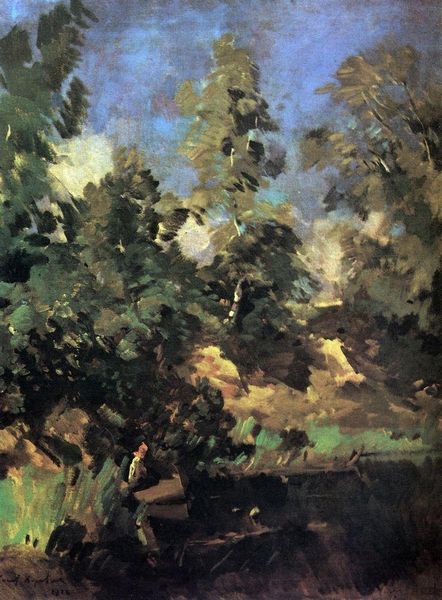
painting, plein-air, oil-paint
#
painting
#
plein-air
#
oil-paint
#
landscape
#
oil painting
#
romanticism
#
realism
Copyright: Public domain
Curator: This is "Fountainebleau With Georges d'Apremont," a painting completed by Camille Corot around 1835. It's oil on canvas and exemplifies Corot's dedication to painting en plein air. Editor: It strikes me as incredibly peaceful. The composition is so gentle, those soft greens and browns create such a muted, almost meditative mood. Curator: Corot was a key figure in bridging the gap between landscape painting as academic exercise and as a source of personal expression. The forest of Fontainebleau, near Paris, was gaining popularity as a place for artists to escape urban life and find inspiration. Editor: And you can see that connection to nature so clearly here. The brushstrokes are loose, capturing the essence of light filtering through the leaves. It’s about feeling more than depicting, really. Note, also, how the composition is structured, dividing the trees to highlight the presence of light in this zone. Curator: Absolutely. Painting outside allowed Corot to engage directly with the natural world. Also, bear in mind the rising popularity of Romanticism at that time—a response to the Industrial Revolution that privileged subjective feeling and the sublime beauty of nature. Corot was at the forefront of these movements as his popularity increased along with art venues. Editor: Looking at the painting itself, I’m fascinated by Corot's layering technique. See how he builds up the foliage with subtle variations in color and tone, creating depth without sacrificing that sense of immediacy. Curator: Right. And it's interesting how Corot negotiates the boundaries of both realism and romanticism. While the scene feels true to life, the artist selects specific details and shapes the composition to heighten the sense of harmonious tranquility, characteristic of landscape painting from this period. Editor: This exercise of style becomes self-evident, in retrospect. Curator: Absolutely, it highlights the political changes in Parisian social spheres. Editor: The canvas exudes charm and allows us a glimpse into the evolution of visual and aesthetic representation in art history. Curator: Corot has captured more than a landscape; he’s captured the spirit of a place, a moment in time, and a shifting sensibility towards nature.
Comments
No comments
Be the first to comment and join the conversation on the ultimate creative platform.
